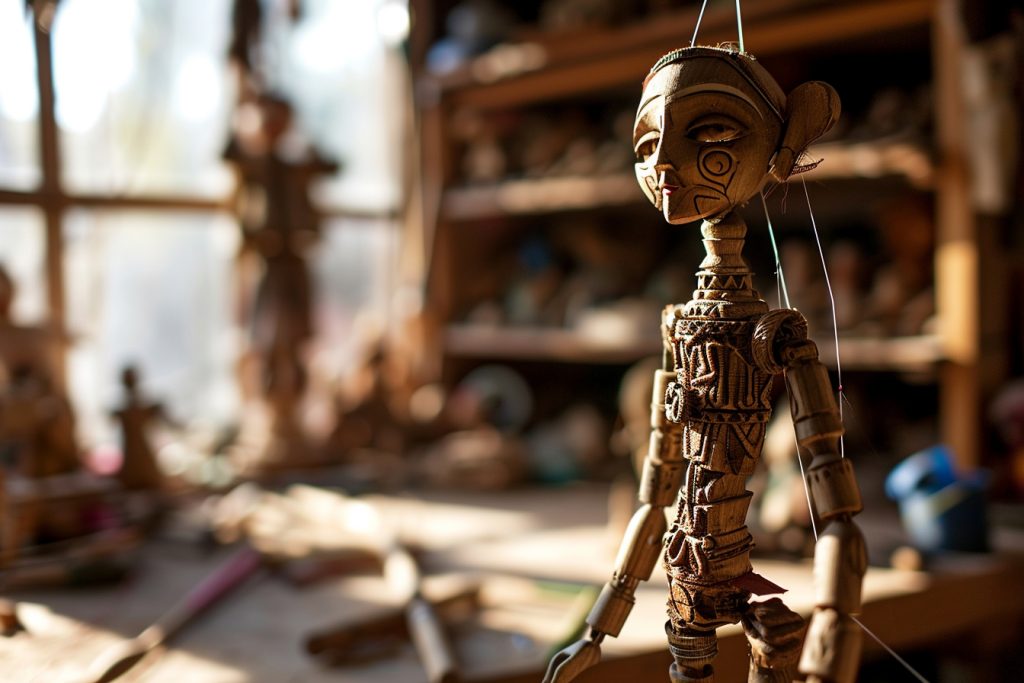Puppetry often conjures images of sock puppets and whimsical stories for children, but this ancient art form transcends far beyond juvenile amusement. With roots deeply embedded in tradition and culture, puppetry is a complex blend of performance art, storytelling, and craftsmanship that continues to charm audiences of all ages. In this dive into puppetry arts, we unravel the intricacies of puppeteering – from the creation of characters to the finesse required in bringing them to life.
Puppetry Explained: More Than Child’s Play
Puppetry is an enchanting performance art that involves manipulating inanimate objects – known as puppets – to tell a story. It’s a form of theatre that has existed for thousands of years and has been utilized in almost every culture around the globe. Often perceived as entertainment solely for children, puppetry actually possesses a rich history of addressing complex themes, social commentary, and adult narratives, showcasing its universal appeal and capacity to engage a broad spectrum of viewers.
Puppets serve as extensions of the puppeteer’s body and imagination, allowing the audience to suspend disbelief and engage with the characters as if they were living beings. The magic of puppetry lies in its diversity; ranging from simple finger puppets to sophisticated animatronics, it encompasses a variety of styles including marionettes, shadow puppets, hand puppets, and rod puppets. Each style offers a distinct avenue for storytelling and requires a unique set of skills to master, solidifying puppetry as a dynamic and multifaceted art form.
Crafting Characters: The Art of Puppet Making
The creation of a puppet is a craft that combines sculpture, painting, and textiles, resulting in a character that can resonate with audiences on a personal level. Puppet makers, or puppet builders, are artists who specialize in bringing characters from mere concepts to tangible forms. They must have an intricate understanding of materials and design to ensure the puppet is not only visually appealing but also functional and durable for performance. Materials used can range from traditional wood and fabrics to modern silicones and plastics, each selected for their properties that bestow the puppet with life-like qualities or whimsical charm.
Moreover, designing a puppet also involves considering the puppeteer’s needs. The internal mechanisms, such as rods, strings, or articulated joints, must allow for fluid movement and control. The builder must work closely with the performer to ensure the puppet can be animated with ease and precision, transforming inanimate materials into characters with distinct personalities and stories. This synergy between the creator and performer is at the heart of bringing a puppet to life, and it is in this process that a puppet begins to embody a spirit of its own, long before it reaches the stage.
Pulling Strings: Mastering Puppeteers’ Skills
Puppeteering is not a skill acquired overnight. It requires patience, practice, and a deep understanding of movement, timing, and expression. A master puppeteer is akin to a conductor, harmoniously controlling the puppet’s limbs, head, and even facial expressions, to evoke emotion and bring the character to life. The challenge lies in the puppeteer’s ability to vanish into the background, letting the puppet claim the spotlight and convince the audience of its vitality – all while delivering a compelling performance that can be comical, dramatic, or anywhere in between.
Training to become a seasoned puppeteer often involves workshops, mentorships, and countless hours of hands-on experience. It’s a blend of theater acting and intricate hand-eye coordination, as the puppeteer must often synchronize movements with voice acting or operate multiple puppets simultaneously. The physicality of puppeteering can be demanding, as performers must sometimes contort into unusual positions to manipulate the puppet without being seen. Thus, a puppeteer’s journey is one of constant learning and adaptation, striving to perfect the illusion that breathes life into these extraordinary figures of cloth and wood.
Delving into the world of puppetry reveals a vibrant tapestry woven with artistry, imagination, and skill. It’s an expressive medium where inanimate objects become vessels of narrative and emotion, captivating the hearts of those who witness their stories unfold. Through meticulous crafting and masterful manipulation, puppeteers continue to pull strings and push boundaries, ensuring that the ancient art of puppetry remains a beloved and evolving form of creative expression on stages and in imaginations around the world.









